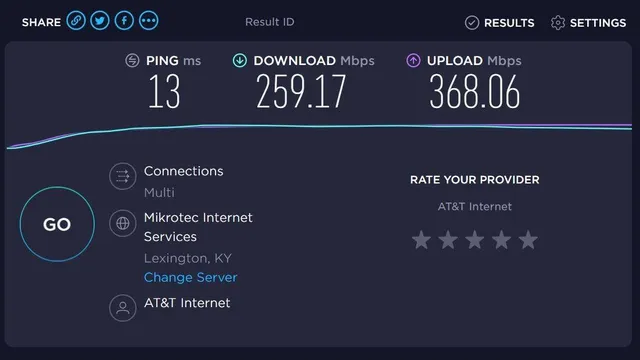Advertised plans often boast internet speeds up to 100 Mbps, yet what is the ideal internet speed for your home?
Discovering an optimal internet speed begins with understanding how your household uses the internet – this will allow you to avoid frustrating lag while avoiding spending money on speeds you never utilize.
What Is It?
No matter the task at hand online, internet speed should always be considered sufficient for successful completion of it. A faster connection ensures web searches generate results quickly; music and video downloads take less time; and you experience far less lag time when multiple devices try accessing the network simultaneously.
Your download and upload speeds (measured in megabits per second or Mbps) are both essential elements of Wi-Fi performance. Your download speed determines the amount of data that can be sent directly from device to device – essential when streaming Netflix or participating in video conferences using Zoom.
A 25 Mbps plan is often considered the perfect balance for households of light internet users; it provides sufficient speed without being too costly or frustratingly slow. But for anyone wanting to stream HD videos, work remotely, or engage in bandwidth-heavy online games, a higher speed plan might be more suitable.
How Fast Do I Need It?
Answering this question depends on your home internet use patterns; for instance, streaming HD videos, gaming online and making large file downloads all consume significant bandwidth and may make even 25 Mbps seem slow.
Typically, having more bandwidth available is beneficial. But you must still monitor how many devices and users connect to your Wi-Fi network, particularly if any are heavy bandwidth consumers.
Speeds up to 100 Mbps can enable you to stream 4K videos on multiple devices simultaneously, join Zoom meetings and enjoy high-definition online games without issue. If you’re uncertain of your connection needs, begin slowly and upgrade as necessary; when providers advertise speeds they tend to refer only to download speeds rather than upload speeds; however fiber internet plans often offer both and this is the ideal setup for most households.
How Many People Will Be Using It?
Most consumers prioritize download speeds when in reality upload speed is just as critical. Video calls (both teleconferencing with coworkers and video chats with friends and family) necessitate sufficient upload bandwidth so the content you are watching doesn’t slow down the entire connection.
Consider how your household uses bandwidth for various activities online. Streaming 4K video, playing online games and using smart home IoT devices such as thermostats, cameras and hubs all require more than the minimum 25 Mbps for optimal functioning.
Keep in mind that internet providers typically advertise plans as having “speeds up to” a specific number, but your actual average speeds may end up lower. Therefore, it’s wise to sign up for more bandwidth than you initially anticipate needing; doing so can ensure your Wi-Fi doesn’t become incapacitated by an annoying buffering icon.
What Time of Day Will It Be Fastest?
when selecting an internet provider. When shopping around for plans, it’s essential that you consider how you and your family use the internet when selecting a plan. For example, light users such as checking emails and browsing social media may require only basic plans (priced under $10 monthly and providing speeds between 5-10 megabits per second for video streaming and casual gaming) which provide plenty of speed to meet these needs.
For higher bandwidth users, Google Fiber may offer gigabit speeds. Unfortunately, though, its services are not always readily available – if it does arrive where you live, additional charges may apply if service becomes available in that location.
An internet connection with sufficient speed enables you to stream video in 4K resolution, attend Zoom meetings and download songs or movies without experiencing lag or slowdowns. A recommended starting point would be 100 Mbps; this should enable four to five devices connected via Wi-Fi simultaneously to work and play without experiencing any problems.





